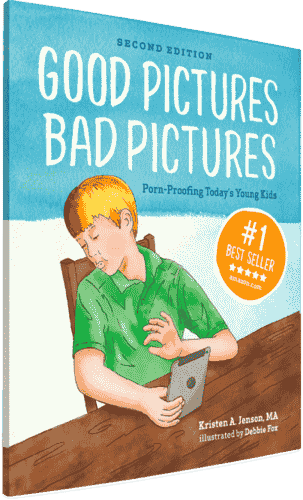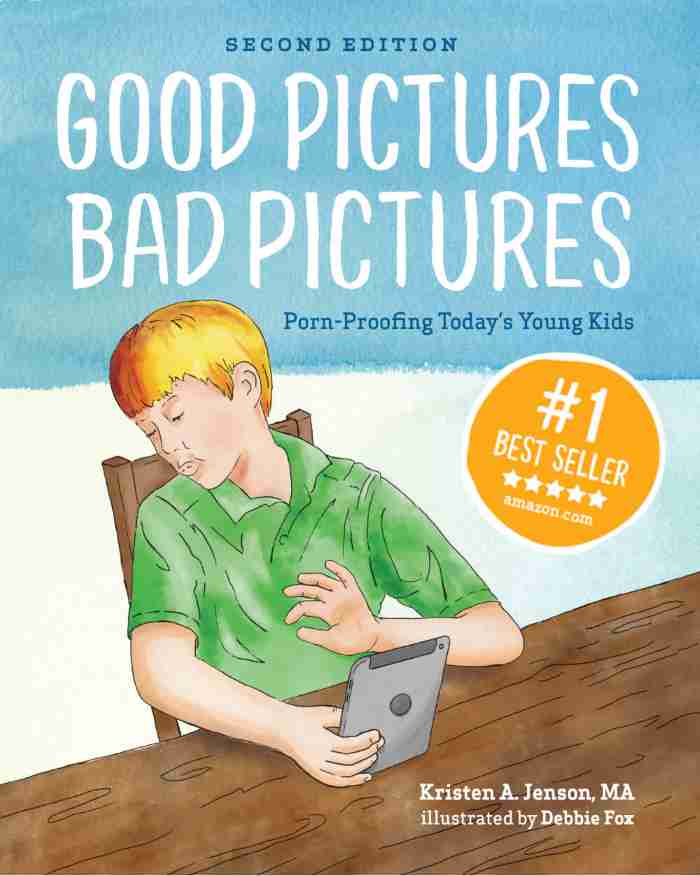Ingenious! A 7-Year Old's Insights for Porn-Proofing Kids

I am so inspired by parents who share their porn-proofing stories with me! This week I received an email from a mom who read Good Pictures Bad Pictures: Porn-Proofing Today’s Young Kids to her young daughter, Lillianne. Whether or not you've read the book, I think you'll learn a lot (as well as get a chuckle!) from this 7 year old's insights.
Here’s what Lillianne's mom wrote:
I just finished reading Good Pictures Bad Pictures with my 7-year-old daughter. At the end of each chapter, she wanted to dictate her notes to me and have me record them in the book. I thought you might get a kick out of her notes. As you can see, she missed the boat slightly in some areas, but some of her comments show impressive maturity and comprehension.
So, Lillianne, thanks for sharing your thoughts on saying "No!" to pornography!
1. Stop and Check for Understanding

Kids get the craziest ideas, so no matter what you’re teaching your kids, stop and ask questions to see how much and how well they understand. Every effective school teacher employs “check for understanding” in their teaching plans. You can, too.
That’s why we included “What Did I Learn” note pages at the end of the first seven chapters of Good Pictures Bad Pictures.
As with Lillianne’s mom, sometimes you’ll find that your child is a bit off track. Sometimes you’ll be amazed at their utter genius.
At the end of Chapter 4: My Thinking Brain, Lillianne wrote this:
The more I use my thinking brain, the stronger it gets. Even if I’m about to look at pornography, my thinking brain says, “No!” If I’m doing my math homework my thinking brain gets stronger about pornography.
Good job, Lillianne! The stronger your thinking brain is, the more power you have to reject pornography!
But here’s where she may need some extra help from mom or dad:
I learned not to take drugs. Drugs will probably make you get pictures of pornography and trick people into looking at them even if they don’t want to.
The point is how would you know if your child understands what you’re teaching them unless you ask them to explain it back to you?
2. Make “What If” Plans
This tip deals with helping kids apply what you've taught them about rejecting pornography. By practicing responses to various situations, you can help them be ready for situations where they could be exposed to pornography. Here's an example:
What if you were over at your friend’s house and she said, I want to show you something on my iPad (or computer etc.). What should you do?
Here’s Lillianne’s answer:
If someone offers to show you a picture, just ask what it’s about and if [they say] it’s a surprise, just don’t look at it.
Exactly, Lillianne! There are some surprises you don't want to see!
Other places that kids are getting exposed to porn on mobile devices are school buses, at sleep overs, and at family gatherings. I've also heard of several cases where kids view porn on school or library computers.
3. Personalize Your Teaching
We use a lot of kid-friendly analogies in Good Pictures Bad Pictures, but kids (like all of us) learn better when we can relate the information to something familiar. Something personal. In Good Pictures Bad Pictures, the little boy jokes about his aunt being addicted to chocolate. Here’s a few examples of how Lillianne personalized this concept about addiction.
Addiction makes you start lying to your family and friends. And you must not try things you could be addicted to once. And you can joke about things you might be addicted to like, “I’m addicted to Dippin’ Dots.” Cuz Dippin’ Dots are good.
Yup! Gotta love those Dippin’ Dots!
Instead of doing drugs or pornography, do something you like. If you still feel unhappy DO NOT TAKE DRUGS. Just wait. Do not take drugs. Just like go outside and lay on the grass. I tried it once and it really helped.
Hmmm…Good idea, Lillianne!!!
3 Tips for Better Porn-Proofing
Kids are just learning how to learn. As you teach them about important subjects, you can improve their understanding and their ability to apply the concepts by practicing these three tips:
- Stop and ask questions. Have them tell you what they just learned.
- Prepare kids with “What If” plans to help them apply what you've taught them.
- Personalize your teaching to make the content relevant and interesting to your kids.
Those are Lillianne's insights (OK, mine, too!). What do your kids think? I bet they have some ingenious insights of their own!
[[CTA]]


Good Pictures Bad Pictures
"I really like the no-shame approach the author takes. It's so much more than just 'don't watch or look at porn.' It gave my children a real understanding about the brain and its natural response to pornography, how it can affect you if you look at it, and how to be prepared when you do come across it (since, let's face it... it's gonna happen at some point)." -Amazon Review by D.O.









